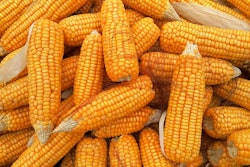
Back in August, we wrote about new-crop sales of soybeans, corn, sorghum and cotton to China.
In the six weeks since then, sales of these crops have continued to turn heads. Large sales combined with decreased production estimates in the September World Agricultural Supply and Demand Estimates report have put upward pressure on futures prices and increased growers’ optimism. It’s time to look again at 2020/21 crop sales to China in relation to previous years. Here we compare new-crop outstanding sales plus accumulated exports (2020/21 marketing year) to the same period from the last five years.
Soybeans
According to USDA-Foreign Agricultural Service’s latest report, new-crop soybean outstanding sales plus accumulated exports to the world stand at 1.305 billion bushels. In the last six weeks, a whopping 645 million additional bushels have been sold or exported. According to the latest report from FAS, new-crop sales and accumulated exports to China stand at 707 million bushels, plus 369.6 million bushels to locations unknown, which are often directed to China. The remaining 2020/21 orders, 229.2 million bushels, are destined for all other countries.
These numbers have garnered a lot of attention because at this point in 2019, only 446.4 million bushels of 2019/20 new-crop sales and accumulated exports had been recorded. Of those 446.4 million bushels, 75.5 million bushels were sold to China and 148.5 million bushels were to destinations unknown. Even more importantly, at this point in 2017, the last “normal” trade year, 819.9 million bushels of 2017/18 new-crop sales and accumulated exports had been recorded. At this point, 2020/21 soybean sales to all destinations are 159% higher than sales during the same time period in 2017/18.
New-crop soybean sales are larger-than-average on a bushel-by-bushel basis, but how these sales relate to expected crop production also matters. As mentioned earlier, the September WASDE reduced the 2020/21 soybean production estimate by 112 million bushels from the August estimate. Total production is now estimated at 4.313 billion bushels. Using USDA’s September estimate of 2020/21 production, sales and accumulated exports of new-crop soybeans to China represent 16.4% of total production. The sales to destinations unknown and the rest of the world account for another 8.6% and 5.3% of estimated 2020/21 production, respectively. Combined, 30.3% of estimated 2020/21 production has been purchased for export, as of Sept. 17.
As seen in Figure 1, this is significantly higher than the 12.3% of the new-crop 2019/20 production that had been purchased through the same week in 2019. It’s also well above the 18.5% of the new-crop 2017/18 production that had been purchased through the same week in 2017. For context, over the last five marketing years, on average, 47% of the total soybean crop was exported.
Corn
As of Sept. 17, new-crop corn outstanding sales and accumulated exports to the world stand at 889.5 million bushels. In the last six weeks, an additional 437.6 million bushels have been sold. New-crop outstanding sales and accumulated exports to China are at 386.1 million bushels, plus 112.6 million bushels to locations unknown, which are often directed to China. The remaining purchases of 2020/21 corn, 390.9 million bushels, are destined for all other countries.
As with soybeans, these numbers have garnered a lot of attention because at this point in 2019, only 360.2 million bushels of 2019/20 new-crop outstanding sales and accumulated exports had been recorded. Of those 360.2 million bushels, only 2.4 million bushels were sold to China and 33 million bushels were to destinations unknown. Even more importantly, at this point during the last “normal” trade year of 2017/18, 446.8 million bushels of 2017/18 new-crop outstanding sales and accumulated exports had been recorded. Of those 446.8 million bushels, 0.3 million bushels were sold to China, 75.3 million bushels were sold to destinations unknown and 371.3 million bushels were sold to the rest of the world. At this point, 2020/21 corn sales to all destinations are 199% higher than sales at the same time period in 2017/18.
New-crop corn outstanding sales and accumulated exports for 2020/21 are the highest recorded in the last six years. As with soybeans, the September WASDE reduced the 2020/21 corn production estimate by 378 million bushels from the August estimate. Total production is now estimated at 14.9 billion bushels. Relative to this still very large expected corn crop, new-crop sales are growing, but continue to be rather small. Given USDA’s September estimate of 2020/21 production, outstanding sales and accumulated exports of new-crop corn to China represent 2.6% of total production.
The sales to destinations unknown and the rest of the world account for another 0.8% and 2.6% of estimated 2020/21 production, respectively. Combined, 6% of estimated 2020/21 production has been purchased for export, as of Sept. 17. However, as seen in Figure 2, early marketing year sales of corn have not been nearly as prevalent as they have been in soybeans. Over the previous five years, the average share of the new-crop corn outstanding sales and accumulated exports as a percent of the September WASDE crop production forecast was only 3.6%.
For context, over the last five marketing years, the average share of the total corn crop that was exported was 15%. This of course, does not include corn that is exported in the form of animal protein, ethanol, ddgs and corn gluten feed/meal. Once corn exported in all forms are added, the total share of corn exported rises significantly, as pointed out by the U.S. Grains Council.
Sorghum
As of Sept. 17, new-crop grain sorghum outstanding sales and accumulated exports to the world stand at 108.8 million bushels. New-crop outstanding sales and accumulated exports to China are at 70.9 million bushels, plus 36.2 million bushels to locations unknown, which are often directed to China. The remaining 1.5% of 2020/21 orders, 1.7 million bushels, are destined for all other countries.
As with corn and soybeans, these numbers have garnered a lot of attention because at this point in 2019, only 5.3 million bushels of 2019/20 new-crop outstanding sales and accumulated exports had been recorded, to any destination. Even more importantly, new-crop outstanding sales and accumulated exports for 2020/21 are closer to 2015/16, the second-highest export volume year in recent history. At this point in 2015, 130.6 million bushels of 2015/16 new-crop outstanding sales and accumulated exports had been recorded. Of those 130.6 million bushels, 76.8 million bushels were sold to China and 51.9 million bushels were sold to destinations unknown.
New-crop sorghum sales are larger-than-average on a bushel-by-bushel basis, but once again, how these sales relate to expected crop production matters greatly. Given USDA’s September estimate of 2020/21 production, the outstanding sales of new-crop sorghum plus accumulated exports to China represent 19.8% of total projected production. The sales to destinations unknown and the rest of the world account for another 10.1% and 0.5% of estimated 2020/21 production, respectively.
Combined, 30.4% of estimated 2020/21 production has been purchased for export, as of Sept. 17. As shown in Figure 3, this is a marked increase from the last several years and very similar to the 22.7% level of 2015/16 early season sales.
For context, over the last five marketing years, on average, 49% of the total grain sorghum crop was exported.
As of Sept. 17, new-crop cotton outstanding sales plus accumulated exports to the world stand at 7.9 million running bales. New-crop outstanding sales and accumulated exports to China are 3.2 million running bales, plus there are 4.7 million running bales destined for all other countries.
At this point, new-crop sales of cotton to China and the rest of the world most closely resemble the 2017/18 marketing year. At this point in 2017, 7.4 million running bales of 2017/18 new-crop outstanding sales and accumulated exports had been recorded. Of those 7.4 million running bales, 1.5 million running bales were sold to China and 5.9 million running bales were sold to all other countries. Compared to the same week in 2019, sales and accumulated exports of cotton to China are up a little over 1.4 million running bales, but overall sales are down almost 0.9 million running bales.
As mentioned earlier, the September WASDE reduced the 2020/21 cotton production estimate by a little over 1 million production bales from to the August estimate. Total production is now estimated at 17.06 million production bales. Outstanding sales and accumulated of new-crop cotton to China represent 18.7% of USDA’s September estimate of 2020/21 production. The sales to the rest of the world account for another 27.8% of estimated 2020/21 production (running bales converted to 480-pound production bales). Combined, 46.5% of estimated 2020/21 production has been purchased for export, as of Sept. 17. As shown in Figure 4, this is well above the 34.2% level of 2017/18 early sales. For context, over the last five marketing years, on average, 79% of the total cotton crop was exported 79%.
Conclusion
As FAS points out in the August 2020 Grain Circular, “strong early season sales do not necessarily lead to greater total exports as numerous variables influence trade dynamics throughout the year. However, large early season sales do give a kickstart to exports in the coming year.” New-crop sales of soybeans, sorghum, corn and cotton are significant and are continuing to show strength as we enter the fall harvest. Time will tell if these strong early season sales end up meaning that a larger share of the total crop is exported compared to previous marketing years.
Contact: Veronica Nigh, Economist
(202) 406-3622









